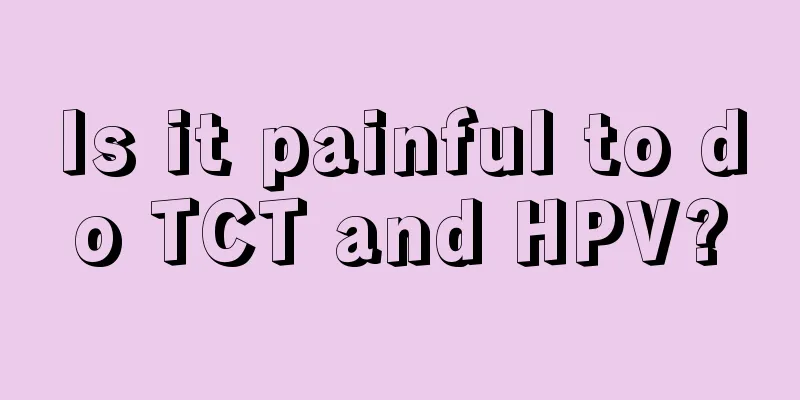Can I breastfeed if I have breast hyperplasia?

|
It is very normal for a breastfeeding mother to feel lumps in her breasts. This is because the baby has not sucked out all the breast milk, which leads to milk accumulation. However, the lumps will gradually subside after the child sucks, and no treatment is needed. Breast hyperplasia that occurs during lactation will gradually improve as breastfeeding stops. This article introduces the distinction between breast hyperplasia and milk stasis. Let’s take a look. 1. Normal breast hyperplasia during lactation During pregnancy, as the baby's gestational age increases, our breasts gradually become larger in preparation for breastfeeding after the baby is born. After mothers give birth, they enter the lactation period. Their breasts will swell due to milk production, and sometimes even feel bloated and painful. You can feel the nodules with your hands. These nodules are normal growth of mammary gland lobes, not accumulated milk, so there is no need to worry. This situation is normal breast hyperplasia. As we secrete milk and the baby sucks, the hyperplasia will change periodically, but it is not a disease and does not require treatment. We always hear people say that babies are born with their own food. In fact, this statement is well-founded. Our bodies have been preparing for the baby's food since pregnancy, and this hyperplasia is also an adjustment made by our smart breasts to provide "food" for the baby. So don't worry about insufficient milk, just feed the baby normally after birth. 2. Abnormal breast hyperplasia during lactation As mentioned above, it is normal for breasts to swell and proliferate during lactation because they undergo cyclical growth and recovery. However, during the recovery process, some or some "disobedient" hyperplastic breast lobules do not recover completely or even not at all, and maintain the state of hyperplasia. This causes structural disorder of the breast tissue and the appearance of persistent nodules in the breast. This is what we call the formation of abnormal hyperplasia. 3. Distinguishing between breast hyperplasia and milk stasis Although both are breast lumps, there are still big differences between breast hyperplasia and milk stasis. Many careful mothers may find that the lumps of breast hyperplasia will become larger and harder as the milk becomes swollen, but become very small or even almost untouchable after the baby finishes feeding. Some mothers confuse hyperplasia with milk stasis, and get scared when they touch a lump, thinking that they have milk blockage again. In fact, it’s just the hyperplasia of breast that’s causing the problem. If milk congestion forms lumps, it will be very painful. Regardless of whether the breasts are engorged or not, the lumps will exist. Some people's skin may turn red and hot. These are the early symptoms of mastitis and we should not take it lightly. 3. What should I do if I have breast hyperplasia during lactation? Whether the hyperplasia before pregnancy continues into the lactation period, or the hyperplasia forms during the lactation period, we don't need to worry too much. If there is no discomfort, there is no need for treatment. With the changes in hormone levels and the baby's sucking during lactation, the hyperplasia will most likely disappear after weaning. |
<<: Will breast hyperplasia occur during lactation?
>>: Can I eat yam if I have breast hyperplasia?
Recommend
Is it good for the fetus if pregnant women eat sweet potatoes?
Eating some sweet potatoes during pregnancy is go...
What to do if pregnant women have a cold constitution
With the rapid development of social life, while ...
What are the threats to women's health?
If you want to have a healthy body, you need to t...
Is steam eye mask a waste of money?
There are more and more ways to entertain in mode...
What kind of pecan is better? What is the difference between pecan and walnut?
Regular consumption of pecans can nourish blood, ...
Is surgery necessary for breast nodules?
Female friends should pay attention to caring for...
What causes cervical cancer?
In fact, it is very necessary for every woman to ...
What to eat for postpartum hair loss
Postpartum hair loss is a normal physiological re...
Menopause abdominal bloating
Female menopause is a stage that every woman must...
Smallpox eradication day: How difficult it is to defeat disease? Just look at the 200-year history of human struggle with smallpox.
On October 25, 1979, the World Health Organizatio...
How to treat postpartum hemorrhage
The concept of eugenics is deeply rooted in today...
What should I do if my girlfriend has menstrual period and stomach pain
Menstruation is something that women will experie...
What should women do if they have a big belly after giving birth?
Women generally face the trouble of a big belly r...
How can women slim down their calves?
Some white-collar workers rarely have time to exe...









